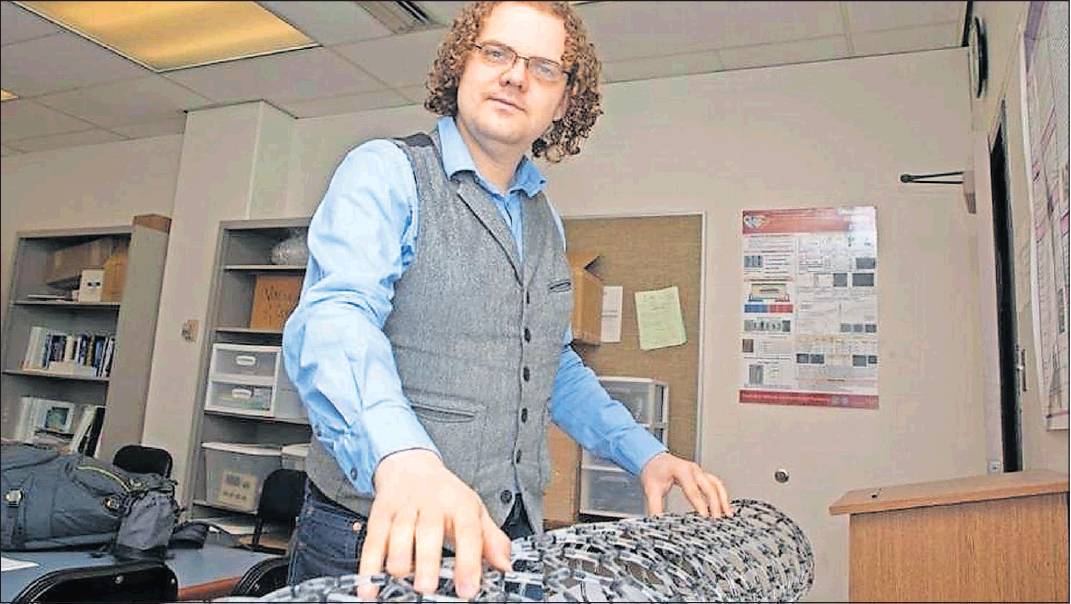‘Iron Man’ suit could charge electronics
By Kara DriscollDayton Daily News
DAYTON — University of Cincinnati engineers and the Air Force Research Laboratory at Wright-Patterson Air Force Base are developing clothing that can charge your cellphone.
The clothing is so technologically advanced that it might remind you of a scene out of “Iron Man.” The clothing uses the unique properties of carbon nano-tubes: a large surface area that is strong, conductive and heat-resistant, according to UC.
UC’s College of Engineering and Applied Science has a five-year agreement with the Air Force Research Laboratory to consider ways to enhance military technology. UC’s Nanoworld Laboratories, co-directed by professor Vesselin Shanov, is using their expertise in electrical, chemical and mechanical engineering to craft “smart” materials that can power electronics.
“The major challenge is translating these beautiful properties to take advantage of their strength, conductivity and heat resistance,” Shanov said.
The researchers are studying how carbon could replace polyester and other synthetic fibers. UC researchers believe carbon nanotubes will replace copper wire in cars and airplanes to reduce weight and improve fuel efficiency. Carbon will filter our water and tell us more about our lives and bodies through new biometric sensors, according to the university.
For the military, this could mean replacing heavy batteries that charge the growing number of electronics that make up a soldier’s loadout: lights and night-vision and communications gear.
“The only thing holding us back is cracking the code on making carbon nanotubes at scale,” said Benji Maruyama, who leads the Materials and Manufacturing Directorate at the Air Force Research Laboratory.
Graduate student Mark Haase spent the past year exploring applications for carbon nanotubes at the Air Force lab. Through the partnership, UC students use the Air Force lab’s sophisticated equipment to analyze samples. Haase has been using the equipment to help classmates with their projects.
“This pushes us to work in groups and to specialize. These are the same dynamics we see in corporate research and industry,” Haase said.
